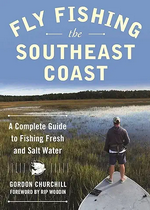In the back yard or on a pond, your casting is superb. But get out on the water, casting to a fish and is goes to Hades in a handbasket.
Deer hunters understand. At the shotting range, it’s a bullseye every shot- on the money, dead center! But then on the deer stand when a real live animal is standing in front of you, things come unglued. You hyperventilate, get the shakes and your vision blurs. But this is a beautiful animal- a trophy, perhaps. So, you squeeze the trigger.
At best, you miss the animal who runs off to safety. At worst, you wound it and it runs off into the thicket, likely to die a slow death. This is not good and certainly not good gamesmanship. The affliction is called Buck Fever and it is not limited to deer hunting.
The big fish is just holding right in front of you. But your cast that was so perfect on your yard yesterday afternoon crashes into the water, scaring the fish away. Or you line the fish, having the fishing line contact its body while you are trying to put it in front of the fish. Or you fall short. Or you tangle your line in the bushes, trees, marsh or boat rigging that is behind you. You gather your thoughts, find another fish and it is even worse this time.
This, too, is the dreaded buck fever. Don’t believe me, one the best casters in the club, who now lives in the Florida Keys, once confessed that he gets Buck Fever when he casts to a nice fish. That’s comforting.
But what do you do about it? Three things come to mind.
- Practice, practice, practice. The idea is to get your muscle memory so refined and tuned that a good cast is automatic. In other words, you don’t have to think- just cast. The more you think, the worse it’s going to be for you and the fish.
- Loosen your grip on the rod. This is such a simple thing to do. It takes two fingers to make a back cast, pressing (lightly) the rod handle into the fleshy part of your thumb. It takes one thumb pressing the rod handle against those same two fingers to make a forward cast. The harder you grip the rod the more you are going to try too hard, exert too much power and be disappointed in your cast. How loose do you grip the rod? Just a touch beyond having the rod fall out of your hand. No kidding. Hold it gingerly, lightly and loosely. If you want the rod and line to do 95% of the work, give the rod and line a chance to work their magic.
- Practice, practice, practice and then practice some more. Don’t spend more than 30 minutes or so or you will wear yourself out and slip into some bad habits and the worst thing you can do is build muscle memory on bad habits. Use the ground exercise for at least 10 minutes each time you practice. You don’t have to worry about keeping the line in the air for you are intentionally letting it fall to the ground.
You get in the habit of keeping your rod tip in the same plane (just inches above the ground in the ground exercise), you can turn around and watch your back cast, looking to make sure you have a tight loop, the leader and fly unroll in a straight line, noticing how long it takes the back cast to unroll so you don’t rush your cast and make it into a bullwhip. Also, it makes it easier to get your timing for the double haul. Then make the forward cast, again looking for a tight loop, a straight cast, the unrolling of the leader and fly and timing of the second half of a double haul.
Thirty minutes several days a week will help prepare you for that fish of a lifetime. You’ve done it all before.. Don’t over-think it. Just do it. Let your muscle memory take over. You will be amazed. Keep it simple. Celebrate the fish after you catch it instead of before. You can do it because you have practiced and practiced. You’re not trying to choke the rod handle. You’re ready to catch that fish!



